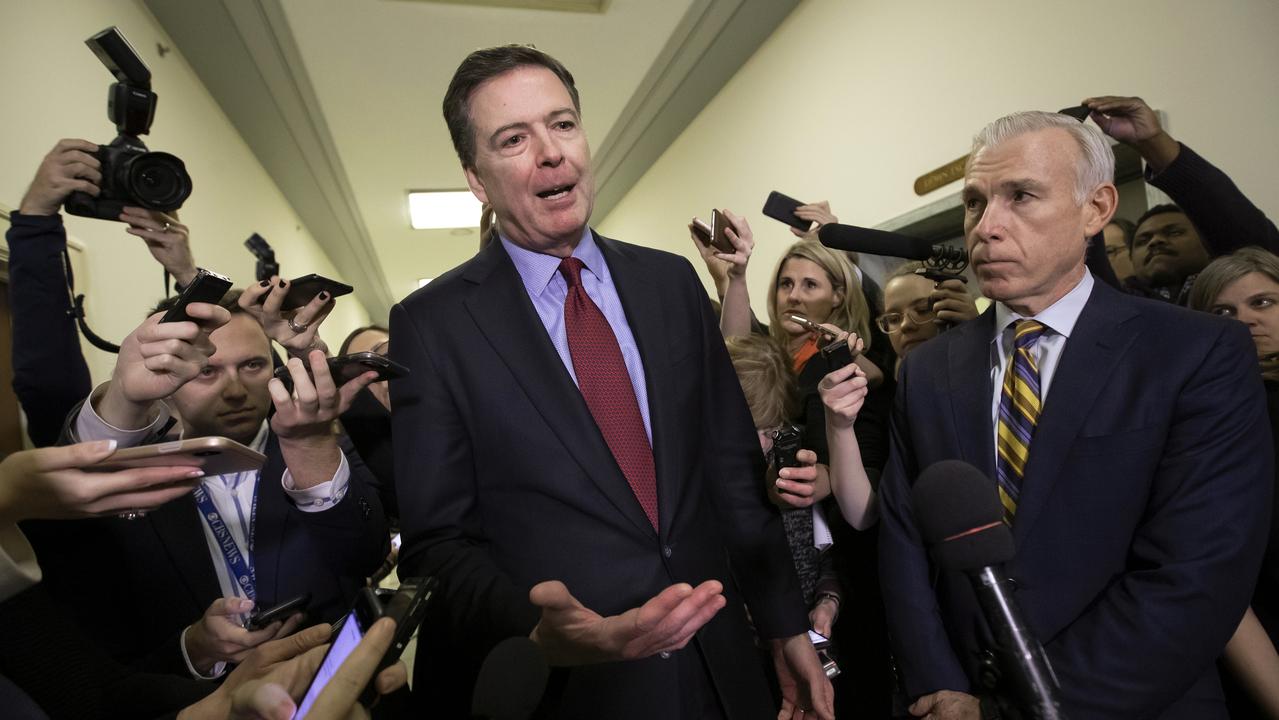Ruinous energy policy is all pain with no gain
Like the Blob from the sci-fi movie, a spineless, pointless Liberal Party faction is smothering everything in its path.

The Liberal Party has torn itself apart for a decade on climate and energy policy, and it is going to continue to do that next year as it battles crucial state and federal elections. The NSW moderates, who have taken over the state branch with an insidious brand of factionalism and patronage, are like the Blob from the 1950s sci-fi movie: spineless, pointless and smothering everything in their path. No one knows what the moderates stand for; most adroit at targeting those in Liberal ranks who espouse conservative values and policies, they echo Labor and leftist attacks on the Coalition and shrink from debate except against their own.
Their electoral legacy is there to behold: a minority federal government wallowing in the polls, a Victorian opposition trounced by a hard-left Labor government shrouded in scandal, and a NSW government facing the prospect of defeat despite presiding over an economy and infrastructure agenda that is the envy of the nation.
Federally, the 2016 electoral result tells the story. The Coalition has not been usurped by a rampant Labor Party. Rather, the right of centre has fractured, with One Nation and other minor parties and independents reaping the benefits. Labor has benefited from this mainly through preferences rather than a boosted primary vote — until the open warfare in Liberal ranks after the knifing of Malcolm Turnbull. Bill Shorten is the luckiest Australian since Steven Bradbury; he looks set to take a political victory that is the equivalent of winning the crucial last set of a Wimbledon final by receiving four double faults.
Don Harwin is the latest so-called moderate to display political and economic ineptitude, undercutting the re-election chances of his own team and the Morrison government, such as they are. As NSW Energy Minister, he proposes zero net emissions for his state by 2050 and accuses the Morrison government of refusing to build this target into national policy because of the federal Liberal Party’s “climate wars”.
Needless to say, he is portrayed as a hero by Labor, the Greens, the ABC, much of the Canberra press gallery and the vested corporate interests of the energy sector.
Harwin is unlikely ever to be asked, let alone answer, the obvious questions. Why would NSW reduce emissions to net zero? How could this benefit the planet when global emissions are rising? What would it cost? Who would pay? Has he commissioned a cost-benefit analysis? Why does NSW export cheap energy to the world in the form of coal but baulk at further use of this resource itself? Will his policy reduce or curtail global temperatures? What science and technology will be available to deal with these issues in 2050? How will people on fixed and low incomes deal with higher electricity prices? How will the reliability of supply be guaranteed? And, if voters really wanted to pursue such futile, risky and expensive climate gestures, why wouldn’t they just vote Labor or Greens?
It is difficult to grasp why Liberals would not focus on price and reliability to protect jobs, support families and underpin economic opportunity. This should be core business for those interested in mainstream politics.
If Harwin, Turnbull or anyone else could point to a looming crisis that could be averted by compromising our energy needs, then it might be worth considering. But they have to do better than the familiar mantra, seldom interrogated, that climate change is real and we must do something about it now. Those who claim to back a scientific approach often lack rational arguments. It seems silly to have to go through the basics but perhaps we should. Most of this debate is stuck in a superficial reverb about a dire crisis and a proposed response without justification of either.
As we know, the effect of global warming is a matter of considerable ongoing research, assessment and contention. Average temperatures have risen by about a degree during the past century but the climate stubbornly has refused to behave in accordance with the alarming models produced by most scientists. We have no control sample; we don’t know whether the planet would have warmed, cooled or hovered like a wine fridge were it not for the emissions we have produced, mainly in the second half of that 100 years.
While scientific consensus tells us increased carbon dioxide in the atmosphere is likely to produce greater warming, there is legitimate debate about the extent, detrimental effects, benefits and the relative role of other variables in a changeable climate system.
Appropriate responses based on science and economics range from business as usual to abandoning mitigation in favour of adaptation. Technological developments are bound to play a major role in everything from cutting emissions to adapting to a warmer world.
Given bureaucrats and politicians have decided through the Kyoto and Paris processes that emissions reduction is the goal, there should be detailed debate about what policies can best deliver that outcome. When it comes to fixed power generation, this is a dilemma where there actually is a silver bullet — if we decided we urgently needed emissions-free, reliable electricity, we know how to get it. The fact nuclear energy is largely ignored in this debate tells us much about the agenda and real urgency, or lack thereof.
In this newspaper on Thursday, Bjorn Lomborg, a lonely voice of sanity in this debate, offered one of the pithiest and most important observations about global warming. “It is not the end of the world,” he said. It is funny because it is true and is at odds with the zeitgeist of catastrophism. From Al Gore to Tim Flannery, from last week’s Carols Against Coal to Shorten and Harwin, there is a never-ending procession of Chicken Littles to frighten our kids, poison our politics and burden our economies. Yet no scheme to make Australian households and businesses pay more for power will enhance the planet’s future. These policies exist primarily to trumpet the fashionable sensibilities of their spruikers.
Because we share one atmosphere, no nation sensibly would take a policy decision without considering what is happening in the rest of the world. This is where the overzealous activism of people such as Harwin, Shorten and the Greens is exposed as foolish and debilitating. We have turned our advantage of cheap and abundant energy into a competitive disadvantage. Power prices have increased an average of 70 per cent in real terms across the past decade, and low-income households now spend 10 per cent or more of their income on electricity.
Prices have been driven largely by the cross-subsidisation of renewables, leading to duplicated generation, additional transmission and mothballing of cheap power generation. Additional costs hit taxpayers directly from budget expenditure on grants and rebates for renewable schemes.
The Renew Economy website has estimated the additional investment at $60 billion. Some of this would have been required to replace or upgrade existing plants to increase capacity, but most was unnecessary except to promote renewables and reduce emissions.
Resultant financial pressure on families, businesses and industry has stifled spending and investment. Direct job losses have come from closure of coal-fired generators in South Australia, Victoria and NSW, and there have been indirect job losses in manufacturing, aluminium and steel plants where power costs have been a factor.
Reliability has been compromised too — South Australia left itself so reliant on interstate dispatchable generation that when its interconnector to Victoria was tripped, the entire state was blacked out for the first time in its history. The direct hit on its economy was calculated at $367 million and it triggered an extra $500m in state government spending on diesel generators and batteries to protect against future vulnerability.
Balanced against these costs are the benefits. So far, they amount to nil. The latest international data has global carbon emissions growing at 2.7 per cent annually, or by more than twice the total annual emissions from Australia. So, the amount of emissions we aim to cut annually by 2030 are being added by the rest of the world (mainly China and India) every four weeks.
For all our pain, there has been precisely no gain. Those countries that have reduced emissions are mainly those enjoying side benefits from economic decisions — switching to gas, using abundant hydro or nuclear. While dumping Paris, the US has lowered emissions from power generation by using fracked gas.
Other nations increase emissions as they lift people out of poverty. In Asia, the subcontinent and Africa, hundreds of millions of people only now are starting to enjoy the improvements in quality of life, longevity and prosperity that flow from abundant and affordable energy.
Australia alone has turned climate and energy policy into an economic millstone and political suicide bomb. Harwin, with the assent of Premier Gladys Berejiklian, seeks escalation of economic hardship while driving wedges into the single largest and most damaging policy schism in the Coalition. Genius.
The NSW moderates think they will appeal to the enlightened denizens of their state and reap political benefits, wrongly interpreting the Wentworth by-election and Victorian election results as demands for a green-left consensus. The Coalition exists to be a beacon of economic good sense and pragmatism. It came into office in the 2013 landslide on the back of Tony Abbott’s campaign to axe the carbon tax and lower electricity prices. It forgot its mission after the Blob eliminated Abbott.




To join the conversation, please log in. Don't have an account? Register
Join the conversation, you are commenting as Logout